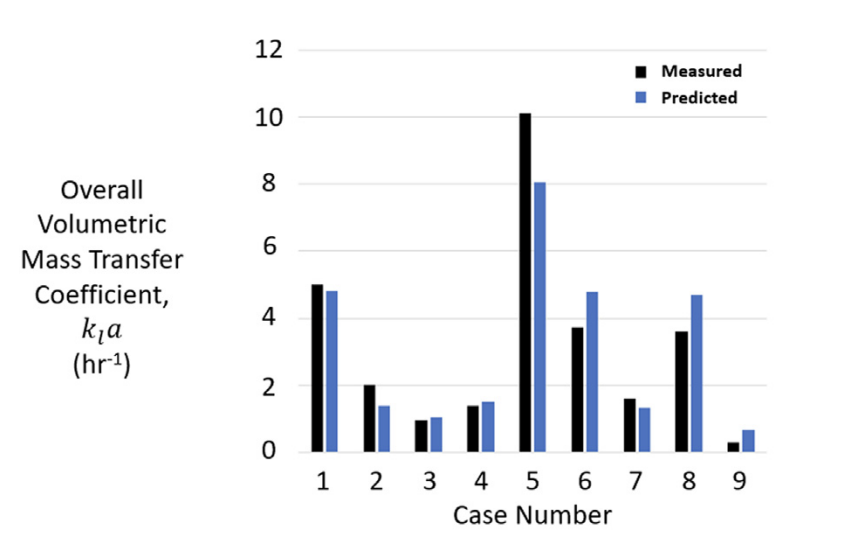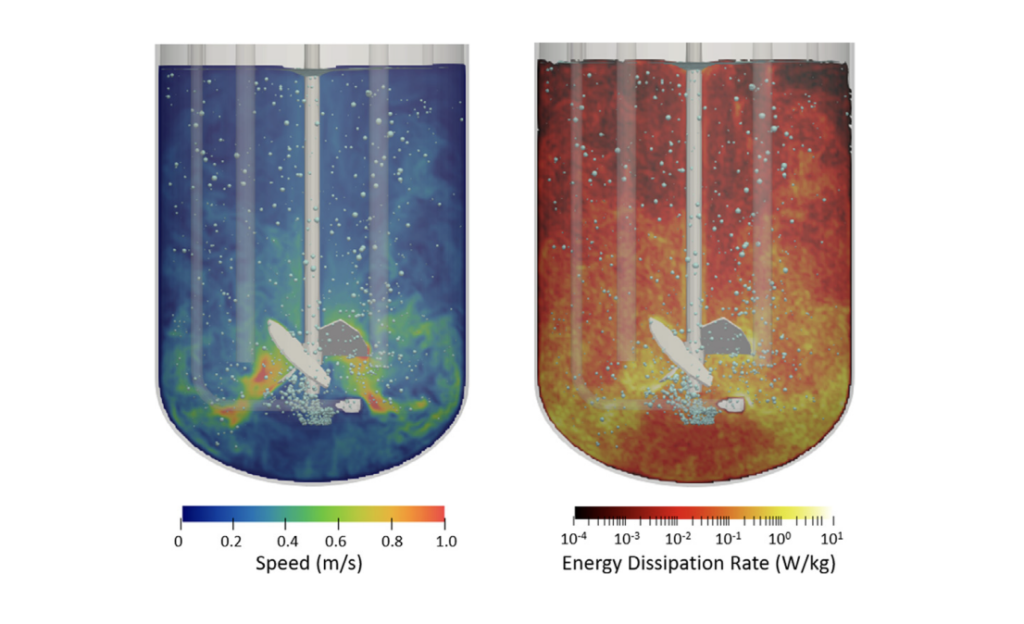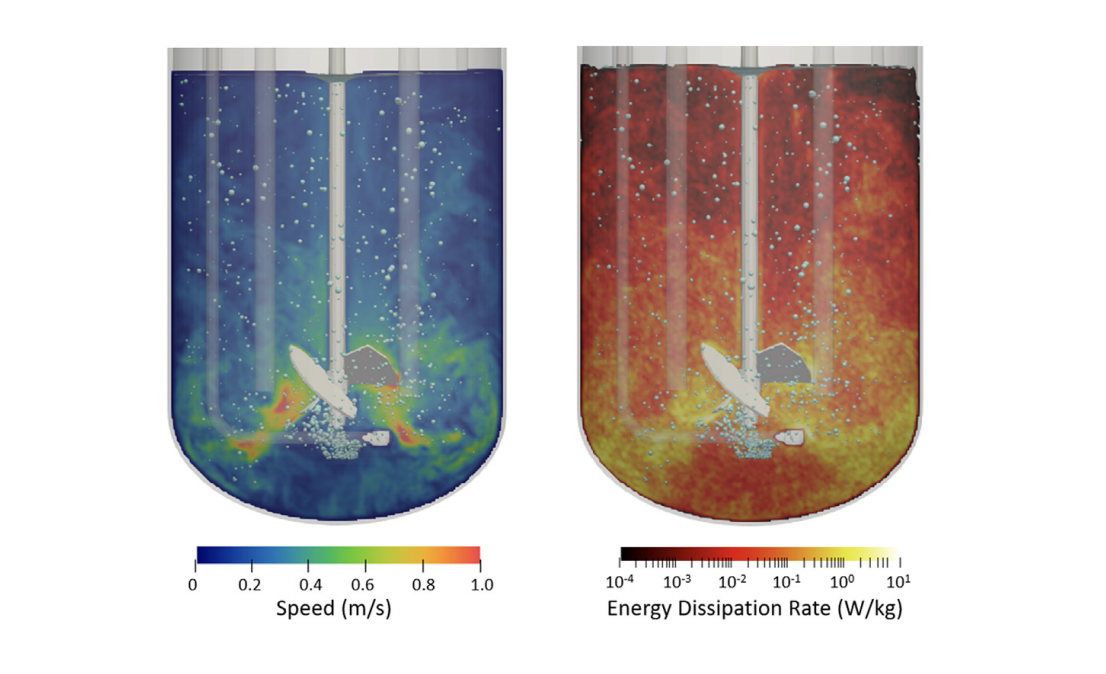A mechanistic approach to predict complex fluid dynamics and scale-up bioreactors for production.
For pharmaceutical companies like Bristol Myers Squibb, the biomanufacturing process of biologic drugs— substances produced by living organisms within stirred tank bioreactors—presents challenges to process scale-up and intensification. But the complex fluid mechanics at play make traditional predictive mathematical modeling slow and difficult.
That’s why Bristol Myers Squibb turned to modern CFD software.
With M-Star CFD, Bristol Myers Squibb successfully developed a framework for building time dependent, bubble-resolved, two-phase models to investigate the real-time blending and mass and oxygen transfer in stirred tank bioreactors.
The following case study follows findings from research featured in Chemical Engineering Science, 2021.
Problem
Bioreactors are designed for specific scales and conditions. So, Bristol Myers Squibb needed to find a way to predict and understand how a process they developed and optimized at a small, tabletop scale will translate to the production scale— while still maintaining optimal bioreactor operation.
The problem is that dissolved gas concentrations—a key environmental parameter in a biologic process with living organisms—are informed by complex fluid mechanics that make a single-phase fluid model inapplicable. To properly capture the complexity of cell culture processes, Bristol Myers Squibb needed to develop a two-phase fluid model that is capable of not only handling agitation and gassing but also supporting species transport across the bubble and liquid interface.
What about RANS?
Time-average flow fields provide little value to turbulent bioprocess simulation. Fully transient simulations, which run efficiently on GPUs, present a far superior paradigm for model fluid mixing and mass transfer processes.
Solution
To predict the complex, multi-fluid mixing process—and successfully scale-up production and ultimately bring compounds to market faster—Bristol Myers Squibb turned to modern CFD software that solves lattice-Boltzmann-based transport algorithms with GPU resources.
“For many cases, this fully resolved implementation can generate engineering predictions faster and with fewer modeling assumptions than RANS/population balance approaches in a multi-CPU environment.”
Physics Investigated
- Fluid Mechanics
- Energy Input & Dissipation
- Bubble Dynamics
- Mass Transfer
- Fluid Species Transport
Systems Modeled
- Blend time at 500 L and 2000 L
- Power input and dissipation at 500 L and 2000 L
- Velocity field and local energy dissipation rates at 5 L
- Mass transfer coefficient at 5 L, 200 L, 500 L and 2000 L
- Sensitivity of output to coalescence and break-up models at 5 L
Computational Considerations
- 4 Nvidia Tesla V100 GPUs
- 1.5 billion lattice updates per second
- 0.5-1 minute of wall time per second of simulation time
With the support of M-Star CFD—including in-depth training with the M-Star team and consulting expertise in fluid mechanics and process simulation—Bristol Myers Squibb was able to model, solve and validate a mechanistic approach for predicting mass and oxygen transfer.
Results

Across the range of operating conditions, the predicted values from the model agreed with measured conditions. The results arm Bristol Myers Squibb with the model and information they need to understand how a process will translate from small scale to production scale.
With M-Star CFD, there were multiple order-of-magnitude improvements in computational speed when solving the fluid transport equations, further bolstered by the use of GPUs over a CPU cluster. The results were in good agreement with experimental data with no model reparameterization between scales or operating conditions.
“By running the algorithm on graphics processing units (GPUs), the approach is shown to solve at timescales practical for industrial application.”

All in all, this approach helped Bristol Myers Squibb speed up the production timeline and reduce the cost of biologics production, so they could get compounds to market faster.
About Bristol Myers Squibb
Bristol Myers Squibb is a global biopharmaceutical company headquartered in New York, NY that manufactures innovative pharmaceuticals and biologics in several therapeutic areas, including oncology, cardiovascular, immunoscience and fibrosis.
 Explore the Scientific R&D Software
Explore the Scientific R&D Software 


















